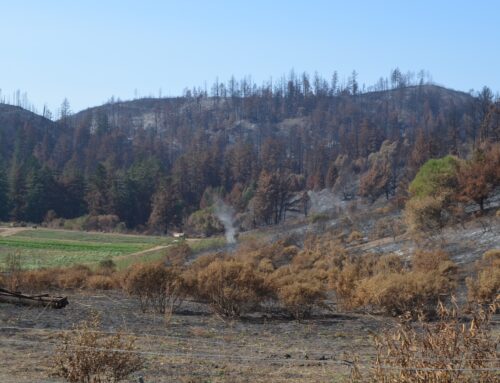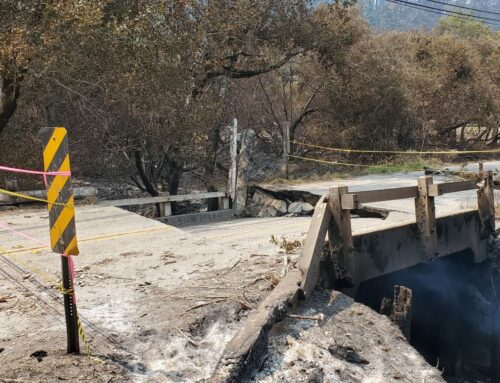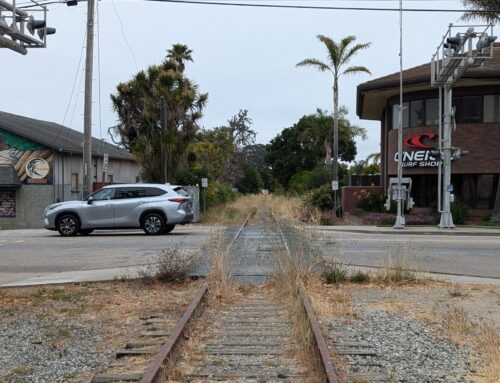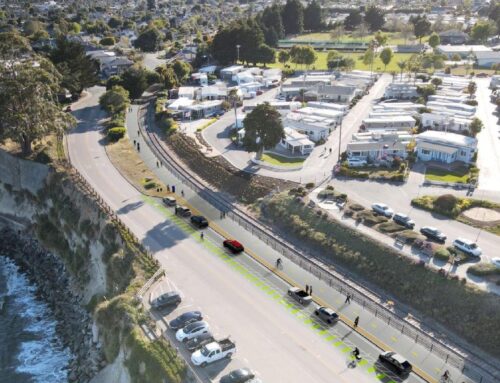SANTA CRUZ >> Santa Cruz County supervisors on Tuesday stepped closer to new rules on vacation rentals, tiny homes and a new joint powers authority to oversee a flood protection project for Watsonville and Pajaro.
Watsonville flood control project
County supervisors voted unanimously to include the county in a new Pajaro Regional Flood Management Agency triggered in part by a $2.8 million commitment from the federal government. The new agency aims to prevent flooding in Watsonville, Pajaro and other areas by renewing the Pajaro River levee to withstand a 100-year flood.
Santa Cruz Local offers its news stories free as a public service.
We depend on people like you — we call them our Santa Cruz Local members — to chip in $9 a month or $99 a year to make sure vital information can be available to all. Can we count on your help?
The levee was built in 1949. Flood water breached it in the 1960s and 1990s, said Mark Strudley, Santa Cruz County flood control division manager, during Tuesday’s county supervisors meeting. Since the 60s, Santa Cruz and Monterey county leaders have worked to build an improved levee, U.S. Rep. Jimmy Panetta wrote in a statement.
Panetta on Tuesday announced that the Army Corps of Engineers would receive $2.81 million for engineering, design and “preconstruction” work on the project. Total federal money for the project could top $250 million, Strudley said.
“It’s nowhere near finished and it’s been a slog to move the project forward, but this funding for the completion of the (preconstruction, engineering and design) is a huge step in the right direction,” Panetta wrote in a statement Tuesday.
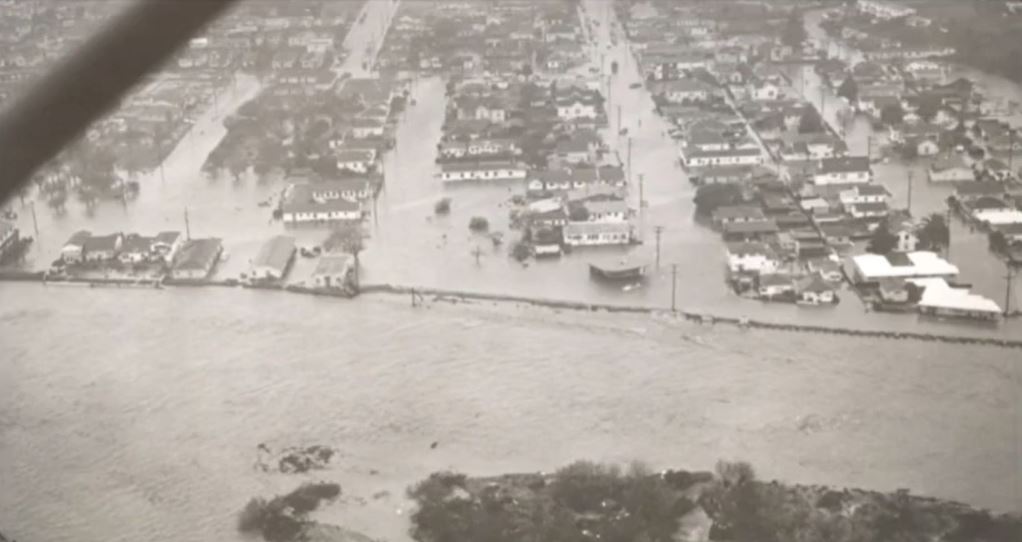
The Pajaro Regional Flood Management Agency is expected to include county authorities from Monterey and Santa Cruz County because the project is on the county line. It also will include representatives from the city of Watsonville, Zone 7 Flood Control District and the Monterey County Water Resources Agency.
The new flood management agency will have the authority to construct, manage and maintain infrastructure as well as issue bonds and collect assessments, fees and taxes. Strudley said the state could pay for other aspects of the project or a Benefit Assessment District could be considered to collect money from property owners who benefit from the project. The assessment district could be considered as early as the fall, Strudley said.

Design work on the levee project is expected to start in February. A draft environmental impact report is expected later this year, Strudley said.
Supervisor Manu Koenig asked staff during Tuesday’s meeting whether climate change had been factored into the plans. “I very much understand the need to keep Watsonville safe as well as the surrounding farmlands, but this is also exactly the kind of area that environmentalists and climate scientists would tell us is ultimately one that we should look at returning to nature,” Koenig said.
Strudley said the Army Corps of Engineers is required to consider climate change. Data so far showed no big changes needed. Agricultural areas with apples and berries near there would not respond well to floods, Strudley added.
“We should focus on people’s lives first before some of the other considerations,” Supervisor Zach Friend said during the meeting. “These levees protect a lot more than agricultural land. They protect two federally disadvantaged communities in Watsonville and Pajaro that rely on the lowest level of flood protection of any federally funded project in the state and one of the lowest in the United States.” Friend also mentioned historic inequity in levee projects across areas with different income levels. Federal money bolstered Santa Cruz levee projects on the San Lorenzo River since the 1970s.
“We should recognize that this project preserves the life and safety of the most disadvantaged within our respective two county communities, not to mention their lifelines through the economic component of agriculture,” Friend said.
Vacation rental cap approved
Supervisors on Tuesday unanimously agreed to raise a cap on vacation rental permits in the Live Oak Designated Area from 220 to 262 permits to comply with a request from the California Coastal Commission.
The 262 vacation rental permits and 18 hosted rental permits bring the total to 280 permits allowed in the Live Oak Designated Area. Supervisor Ryan Coonerty said the new number struck a balance between the need for coastal access and the need for permanent housing in the county.
Supervisor Friend said at least 20 percent of vacation rental owners self reported that those homes had been long-term rentals before they were converted to vacation rentals. He also noted that there was no regulation of vacation rentals in the county 10 years ago.
“We’ve come a long way from unregulated to regulated, and this is a strong, strong ordinance before us,” Friend said.
Supervisors also agreed to new rules about vacation rentals in fall 2020. Among the new rules:
- Two complaints about a problem vacation rental would trigger a hearing in which the licensee defends the license.
- New vacation rental license applications can be reviewed by neighbors in a public meeting.
- Vacation rental licenses would be capped in areas of Live Oak, Pleasure Point, La Selva Beach and Davenport.
Tiny homes
Supervisors agreed on Tuesday to later consider a proposal to classify “tiny homes” on wheels as accessory dwelling units in the county. Details will start to be ironed out with input from the county planning department, Housing Advisory Commission and Planning Commission. Supervisor Koenig campaigned on the idea of legalizing tiny homes as one solution to the county’s housing crunch.
Koenig described tiny homes as 400 square feet or fewer and roughly half the building cost of a typical accessory dwelling unit or in-law unit. Separate from a recreational vehicle but also registered with the Department of Motor Vehicles, tiny homes on wheels typically are made with plywood and other traditional building materials but without drywall.
County law now does not allow structures on wheels to be accessory dwelling units. Koenig pointed to laws that allow them in Santa Clara County, San Jose and other parts of the state that allow them.
“Rebuilding after the (CZU Lightning Complex) fire obviously is a huge challenge for our community,” Koenig said at Tuesday’s meeting. “Legalizing tiny homes is really going to just create more options for people.”
Supervisors Bruce McPherson, Greg Caput, Ryan Coonerty and Friend essentially said they supported the fresh look at affordable housing and wanted more details. “The devil’s always in the details as far as figuring out our zoning and land use requirements,” Coonerty said. “But I look forward to that process.”
Supervisors directed county staff to explore a permit process for tiny homes, potentially within the accessory dwelling unit county law, and return to the board of supervisors Feb. 23 with a timeline for input gathering.
In other news
Koenig said his appointee as alternate to the Santa Cruz County Regional Transportation Commission, Greenway leader Bud Colligan, withdrew himself from consideration. Koenig is expected to choose another alternate.
When asked why he withdrew, Colligan wrote in an email to Santa Cruz Local, “I decided my efforts are better leveraged as a private citizen working with a broad coalition to build a multi-use trail for commuters and recreational use.”
The transportation commission in February is set to vote on whether to pursue a staff-recommended electric train project on the rail corridor in Santa Cruz County.
Editor’s note: Bud Colligan has been a Defender-level member of Santa Cruz Local since 2019. As a policy, stories that reference or quote a Santa Cruz Local donor who has contributed $1,000 or more include a written disclosure.
Stephen Baxter is a co-founder and editor of Santa Cruz Local. He covers Santa Cruz County government.


